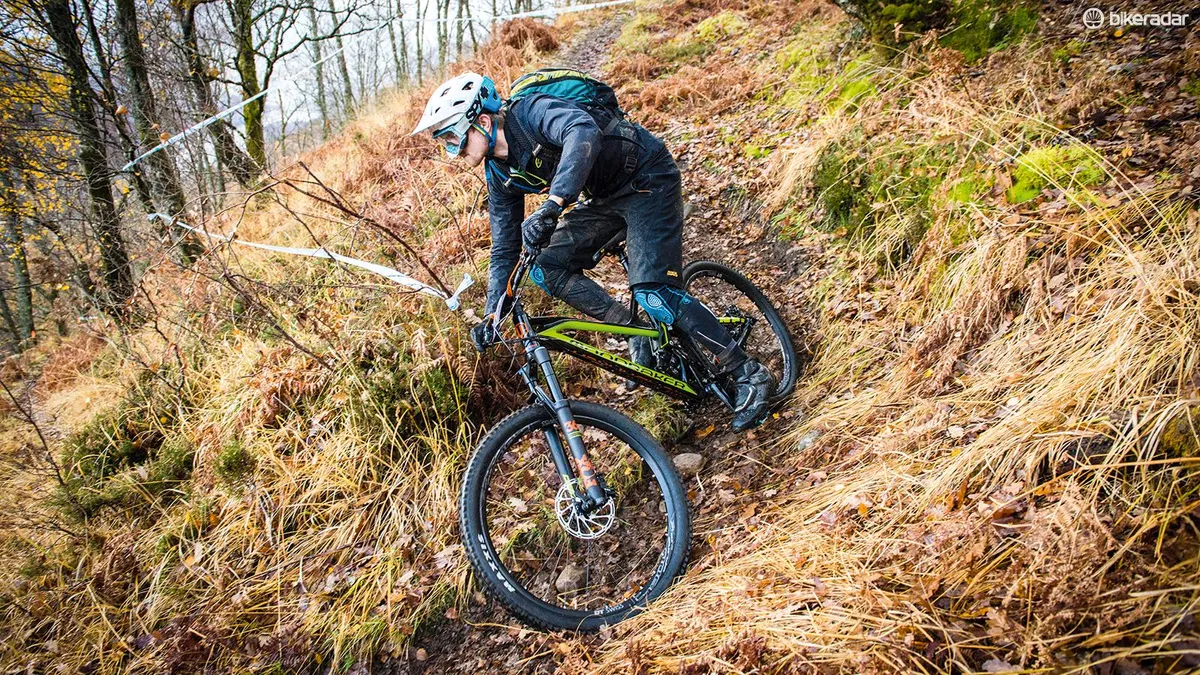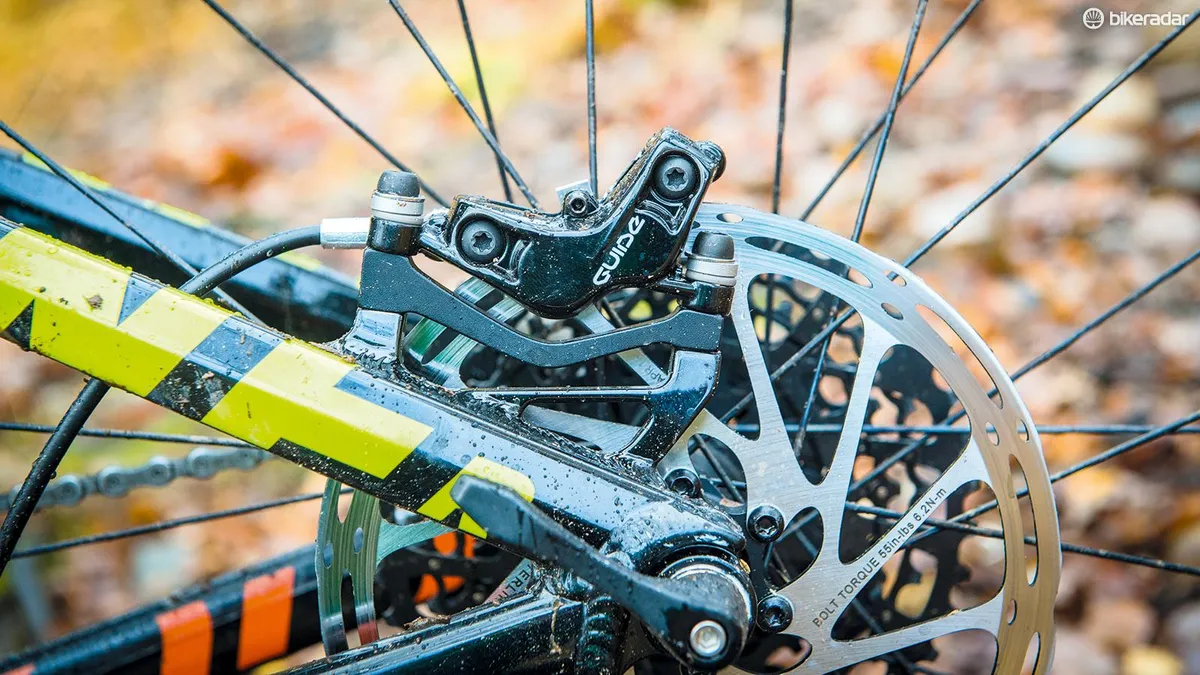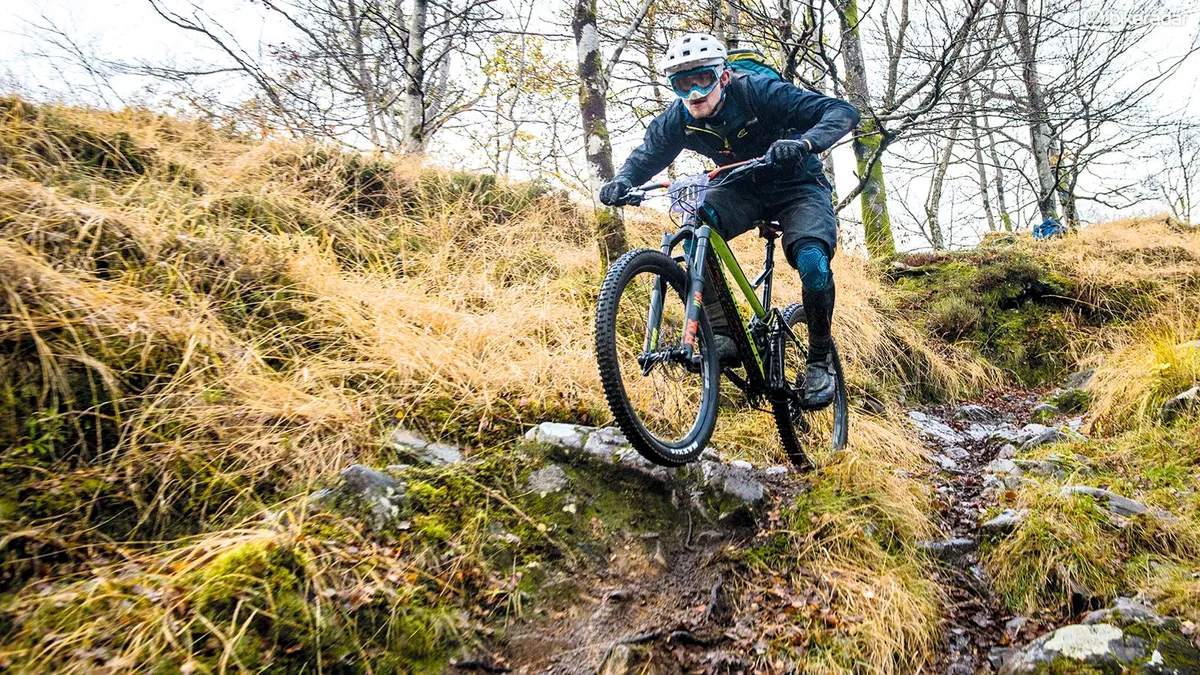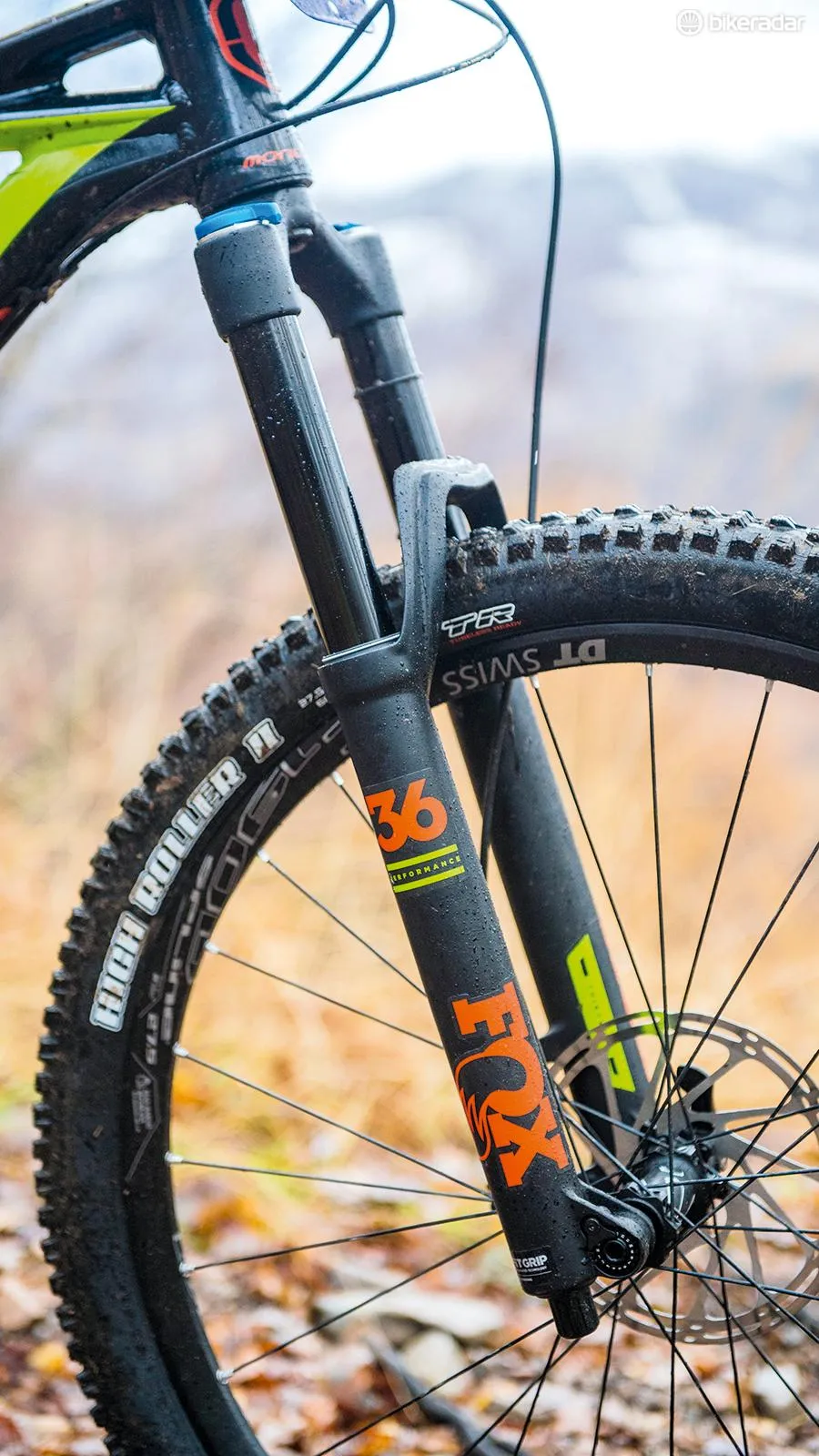Mondraker introduced its radical Forward Geometry concept back in 2011. Now, it doesn’t seem radical at all. To me, it’s kind-of a no-brainer.
Forward Geometry (FG) is simply Mondraker’s term for a bike built around a super-short 10-30mm stem. This means a super long reach and therefore a long front centre, offering more stability at speed. Meanwhile, the short stem keeps the steering quick and responsive while fostering a planted feel on steep, rocky terrain.
The long and short of it

The 30mm stem, combined with a rather steep head angle (66.5 degrees), make for lively and responsive steering. Despite the long wheelbase, I was able to turn fast and tight on the Dune.
The long geometry really gets into its stride when attacking rough, technical trails. The inherent stability of that 1,265mm wheelbase combined with the feeling of security from the short stem, which makes going over the bars feel like a virtual impossibility no matter what the trail throws at you, simply allowed me to push harder and ride faster in technical terrain.
You might think that this kind of surefooted stability makes it boring, but I found quite the opposite. It allowed me to ride faster and more confidently, yet the bike still felt agile, poppy and fun.
Twin-link system

The Dune’s suspension system is another seeming contradiction. The twin-link design allows for high levels of anti-squat at the beginning of the stroke for pedalling efficiency, making the bike feel responsive and efficient under power. Yet this mellows out towards the end of the stroke, so there’s not too much of the associated pedal-kickback on big hits. This is not something that can be easily achieved with a single-pivot design.
The floating mount compresses the shock from both ends in a manner that softens the beginning part of the stroke, before adding support gradually through the mid-stroke. This complements the EVOL air can on the superb Fox Float X shock and the result is an almost coil-like suppleness off the top — boosting predictability and traction — before ramping up gradually through the mid-stroke to provide plenty of support for jumping and pumping.
Once I'd fitted a medium volume spacer, the balance of suppleness and support was superb, and I felt no need to use the shock’s medium compression setting for descending.

Despite the hefty 32.1lb weight, the Dune ascends pretty well too. The effective seat angle is pretty steep at 75.5 degrees. Combined with the long reach, which stretches out the arms and opens up the lungs, this creates a comfy and efficient climbing position. The suspension responds well under power, and can be locked out for maximum efficiency too.
The Fox 36 Performance GRIP fork is less sensitive over small hits, yet lacks support when hitting things harder. Still, the Fox’s beautifully balanced chassis stiffness leads the bike confidently through tech, and does a good job of smoothing out bigger bumps. It’s no FIT4, but is still a solid fork which I preferred to the Yari.

The Dune is respectably well kitted out. The Fox fork, shock and dropper performed admirably. The SRAM Guide R brakes (featuring the updated S4 caliper) were predictable, consistent and progressive — though I’d ideally like to see the more powerful Guide RS model at this price. The NX drivetrain is not light, but does the job fine. With the possible exception of the single-ply tyres, there are no components that really let it down.
Forward thinking

Forward Geometry is five years old and we think it could be taken even further. The seat angle could be steeper to maximise climbing capability, making use of that lengthy top tube.
Although it doesn’t unsettle the super stable handling, the 349mm bottom bracket could be a touch lower to make it more planted. I’d also slacken the head angle by a degree or two for maximum enduro-shredding potential (though this could be achieved with an angleset).
Still, the Dune’s geometry is way ahead of most of its competition. Many riders aren’t ready for the truly radical geometry offered by the likes of Nicolai and Pole. For them, the Dune is a superb compromise.



